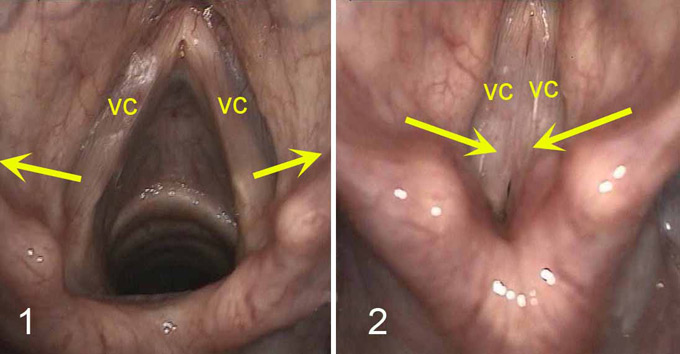Evaluation of the vocal cords with Stroboscopy
Laryngeal Endoscopy with modern rigid and flexible scopes, provides valuable information on the morphology and function of the vocal cords. However, there are cases which need thorough study of the movement of the cords during phonation, in which usual endoscopy fails to provide the information needed. In these cases, which are usually associated with voice dysfunction problems with no obvious pathology on simple endoscopic examination, Stroboscopy is performed.

Stroboscopy is done with the usual rigid or flexible scopes, but instead of the simple light source, a special light source is used. This “strobo” light source produces rapid light flashes, which are fine-tuned with the patient’s voice. With the device at the correct setting, the vocal cords are shown as moving in «slow motion». In this way, hidden pathology or mild functional problems are revealed, which cannot be captured by the human eye in continuous rapid movement of the cords.
The examination can be recorded in digital format and is particularly useful in the follow-up of laryngeal disease.